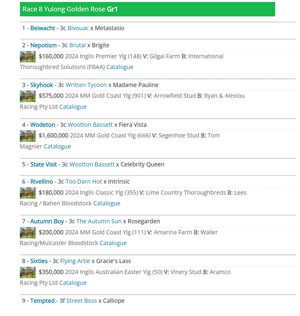Despite having previously written about the new Capital Gains Tax (CGT) and GST withholding rules for property buyers, I’m still really surprised as to the degree of ignorance of these rules – advisers and buyers/sellers alike.

Given now that a new GST withholding regime, relating to the sales of new residential premises and potential residential land on or after 1 July 2018 was bolted onto the original CGT withholding rules (relates to sales on or after 1 July 2016), it’s the right time to revisit this total scheme again.
How many of you know, for instance, that the CGT withholding rules for foreign residents now relates to property sales as low as $750,000? The original value was $2 million!
Our practice deals extensively in property transactions and not just for racing industry players. The volume of transaction has never been higher; thus, I expect many of you, especially foreign property investors, will find this update invaluable. The article has to be longer than usual given the detail involved.
- Overview
CGT and GST obligations often arise when taxpayers dispose of property situated in Australia. In particular, foreign residents are generally subject to CGT when selling Australian property and GST often applies when taxpayers sell new residential premises or land while carrying on an enterprise.
The ATO has held significant concerns over the years over the failure of many of these taxpayers in meeting their obligations under the CGT and GST rules. These withholding rules are about achieving better compliance in these areas.
To address these concerns, new rules have been introduced to assist in the upfront collection of tax by imposing an obligation on anyone acquiring property from such taxpayers to withhold an amount from the purchase price (and to pay this to the AT
1.1 The foreign resident CGT withholding
Under Australia’s foreign resident CGT regime, a foreign resident generally disregards a capital gain or capital loss unless the applicable CGT event happens in respect of a CGT asset that is taxable Australian real property. Taxable Australian real property (‘TARP’) is defined as including “real property situated in Australia (including a lease of land, if the land is situated in Australia)”.
A major issue faced by the ATO has been their difficulty in undertaking compliance action in respect of foreign residents that do not report their CGT obligations (relating to taxable Australian property), given that they are based overseas.
To assist in the collection of tax from foreign residents, the foreign resident CGT withholding rules were introduced. These rules apply to the acquisition of TARP (and certain other taxable Australian property) under contracts entered into on or after 1 July 2016, and broadly impose an obligation for buyers to withhold 12.5% of the purchase price (to be paid to the ATO).
- When must a property buyer withhold an amount at settlement under
the CGT withholding rules?
A property buyer is generally required to withhold an amount from the purchase price of TARP when all the following conditions are satisfied in relation to the transaction:
(a) The buyer becomes the owner of TARP as a result of acquiring it from one or more entities.
(b) The market value of the property is $750,000 or more (or $2 million for contracts entered into between 1 July 2016 and 30 June 2017).
(c) A clearance certificate, issued by the ATO, has not been received from the seller. Clearance certificates are discussed in more detail below.
(d) The withholding amount has not been varied to nil by the ATO (e.g., if a deceased estate is the buyer).
Importantly, the way the legislation is structured, an acquisition of TARP is effectively deemed to be from a foreign resident and subject to foreign resident CGT withholding (even if the seller is an Australian resident), unless the seller has obtained a clearance certificate from the ATO that says otherwise, or where another exclusion applies. Accordingly, buyers should review whether an exclusion applies prior to withholding.
1.3 What information must a seller provide to a buyer?
Under the foreign resident CGT withholding rules, a seller generally seeks to provide information to a buyer for two reasons, these being (where applicable) to avoid the buyer withholding an amount at settlement (e.g., by providing a clearance certificate when selling TARP), and to reduce the withholding rate (e.g., by providing a valid variation notice).
TAX TIP – Timing of when credits are claimed
Where a capital gain is made on a CGT asset (that is subject to foreign resident CGT withholding), credits are claimed by the seller in the same income year as that in which a tax liability arises on the capital gain. In accordance with a special ATO rule, tax credits (i.e., the withholding tax) may be claimed in the tax year that the contract is made (being the year in which the tax liability arises for the seller on the capital gain) rather than the next tax year (being the year the withholding tax is generally paid).
1.3.1 Clearance certificates
A clearance certificate is a document issued by the ATO that provides certainty to a buyer of TARP (and certain other taxable Australian property) regarding their withholding obligations. The clearance certificate effectively confirms that the ATO accepts the seller to be an Australian resident and that foreign resident CGT withholding does not apply to the transaction. Generally, an Australian resident seller (or their representative) applies for a clearance certificate by completing an online ‘Clearance certificate application for Australian residents’ form. Where there are multiple sellers disposing of a single asset, each seller applies for a separate clearance certificate in their name only. Once the clearance certificate has been issued by the ATO, it is then provided to the buyer.
TAX WARNING – Seller’s responsibility to provide certificate on time
A clearance certificate is only effective in relieving a buyer from their withholding obligations when it is provided to them by the seller before payment of the withholding tax is required (i.e., generally at settlement). It is the seller’s responsibility to obtain a clearance certificate and provide it to the buyer on time. The ATO recommends that sellers seeking a clearance certificate should apply online as early as practical in the sale process (and at least 28 days before settlement, or possibly earlier for high risk or unusual cases).
2.0 The new GST withholding rules
Please note that these rules apply not just to property sales by foreign residents, unlike the CGT withholding rules. They also apply to sales for any value, i.e., not just sales for $750,000 or over.
Broadly, under the GST rules, a taxpayer that makes a supply of (i.e., sells) new residential premises or land is required to pay GST where the property is located in Australia, the supply is made in the course of carrying on their enterprise, and the taxpayer meets the GST registration turnover threshold of $75,000
TAX WARNING – Isolated transaction may be subject to GST
The definition of an enterprise for GST purposes is very broad and includes an activity “in the form of an adventure or concern in the nature of trade”. Under this definition, an enterprise is not restricted only to a business, and may also include an isolated transaction undertaken to make a profit. Examples of isolated transactions that may be regarded as an enterprise under GST law include: (a) a taxpayer acquiring land zoned for residential purposes, with the intention of subdividing the land and selling the subdivided blocks for a profit; and (b) a taxpayer constructing a house (i.e., new residential premises) on land owned for several years, for the purpose of selling the house for a profit.
Where a supply of new residential premises or potential residential land is subject to GST, a taxpayer must report (and pay to the ATO) their GST liability in their following Business Activity Statement (‘BAS’). In many cases, this may be up to three months after settlement (for a taxpayer that lodges BASs on a quarterly basis).
Where GST withholding applies to a transaction, a property buyer is broadly required to withhold:
• 1/11 of the contract price (for supplies not made under the margin scheme);
• 7% of the contract price (for supplies under the margin scheme); or
• 10% of the GST exclusive market value of the supply (for supplies between associates for consideration less than the GST inclusive market value).
The withholding amount is generally required to be paid by settlement date (under a standard land contract). Where a property is acquired under an instalment contract, the due date for the withholding payment is on the day the first instalment is paid. A payment may be made to the ATO by the buyer either directly or indirectly (through the seller).
2.1 When does GST withholding apply to a property sale?
The GST withholding rules apply to taxable supplies (by way of sale or long-term lease) of certain new residential premises and potential residential land. These supplies are taxable supplies where they are made by a GST-registered taxpayer (or a taxpayer that is required to be registered for GST) in the course of carrying on their enterprise, relate to property located in Australia and are neither GST-free nor input taxed.
Under GST rules, where a property buyer has acquired property subject to GST withholding, they are required to withhold an amount from the purchase price.
2.1.1 Meaning of ‘new residential premises’
Residential premises are generally regarded as ‘new residential premises’ where they:
• have not previously been sold as residential premises (other than commercial residential premises) and have not previously been the subject of a long-term lease;
• have been created through substantial renovations of a building; or
• have been built, or contain a building that has been built, to replace demolished premises on the same land.
Despite meeting one (or more) of these conditions, residential premises are not new residential premises where, broadly, they have been rented for a continuous period of at least five years since the time they became new residential premises.
2.1.2 Meaning of ‘potential residential land’
In relation to the supply of potential residential land, the GST withholding rules only apply where the land is included in a property subdivision plan and does not contain any building that is in use for a commercial purpose. In addition, any acquisition made by a GST-registered buyer who can at least partly claim a GST credit for the purchase is excluded from these rules.
‘Potential residential land’ is defined in the GST Act) as land that it is permissible to use for residential purposes, provided it does not contain any buildings that are residential premises. Land is permissible to use for residential purposes (and therefore may be potential residential land) even where that use is subject to local government requirements (e.g., where an approval or permit is required to construct a dwelling).
2.2 What information must a seller provide to a buyer?
A person that makes a supply of residential premises or potential residential land (i.e., a ‘seller’) is required to provide a ‘supplier notification’ to a taxpayer acquiring such property (i.e., a ‘buyer’) prior to settlement. There are limited exceptions to this requirement.
TAX WARNING – Supplier notification not limited to a supply of new residential premises
When residential premises are being sold, a seller’s obligation to provide a supplier notification is not limited to a supply of new residential premises. That is, the obligation for a seller to provide the buyer with a supplier notification also applies to the sale of an old house or any other residential premises (that are not ‘commercial residential premises’).
Please don’t hesitate to contact the writer if you wish for me to clarify or expand on any of the matters raised in this article.
PAUL CARRAZZO CA
CARRAZZO CONSULTING PTY LTD
801 Glenferrie Road, Hawthorn, VIC, 3122
TEL: (03) 9982 1000
FAX: (03) 9329 8355
MOB: 0417 549 347
E-mail: paul.carrazzo@carrazzo.com.au
Web: www.carrazzo.com.au










